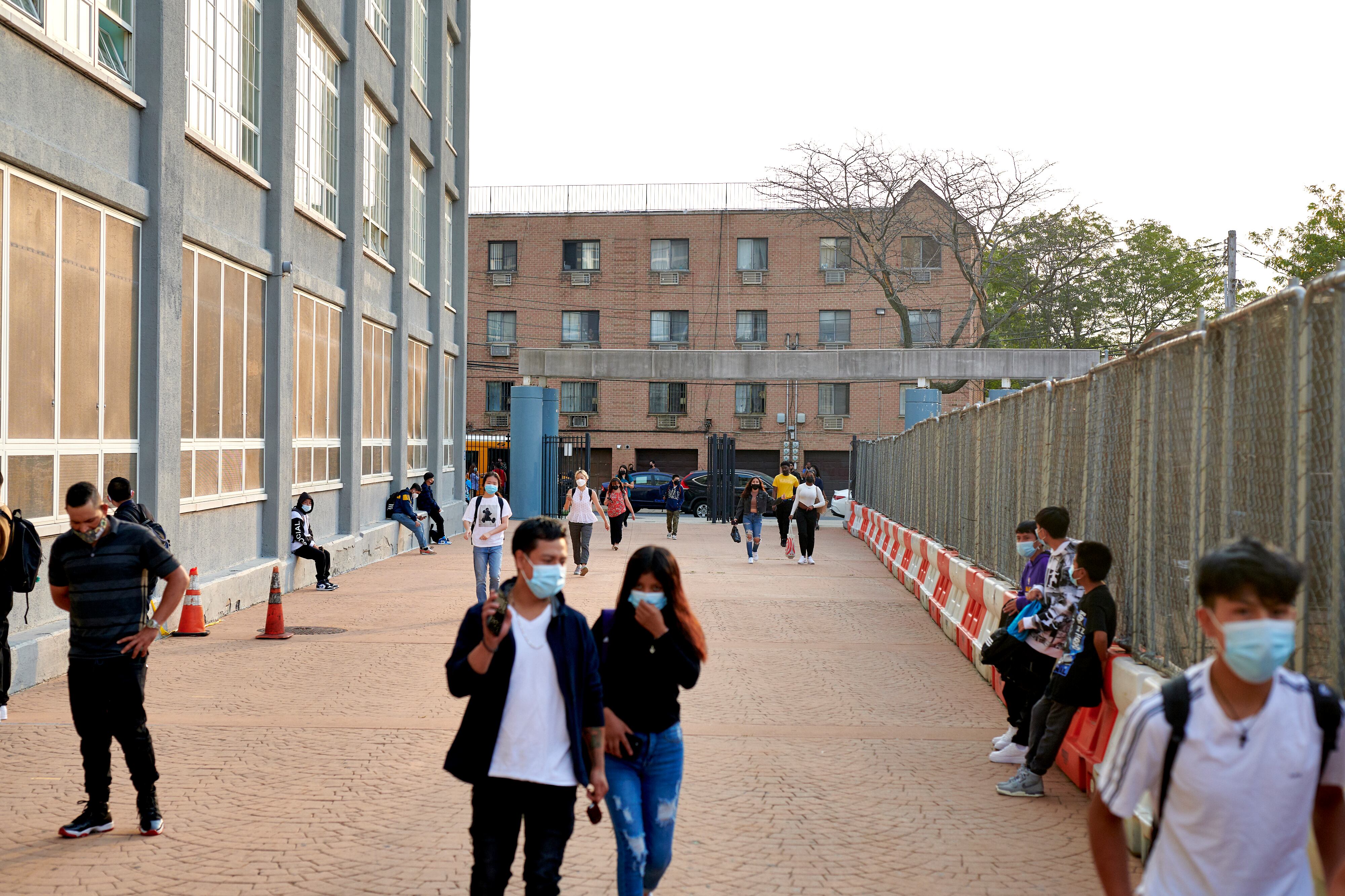New York City is distributing nearly $12 million in extra funding to schools that have welcomed new students who are homeless, officials announced Monday — though the city’s budget watchdog claims that schools are owed substantially more.
Roughly 7,200 students who live in temporary housing have enrolled in the city’s schools since July 2. Many of them are migrants from South American countries who are seeking asylum.
City officials said Monday they will send an additional $2,000 for each homeless student who arrived since that date to schools that have enrolled at least six new students who live in temporary housing. (The education department does not collect student immigration status, so the city uses housing as a proxy to direct resources to campuses that are absorbing newcomers.)
Records show 369 schools will see bigger budgets thanks to the new money, which can be used for additional tutoring, curriculum materials, after-school programs, and clothing or other personal items students might need, department officials said.
“Schools are the centers of our communities, and through these funds, we will ensure that our schools are fully equipped to provide the academic, emotional, and social needs of our newest New Yorkers,” Chancellor David Banks said in a statement.
Advocates cheered the new funding, which comes as city officials have vowed to provide support for a wave of new immigrants who have an array of needs, from finding stable housing, accessing mental health services, and navigating schools that have long suffered from shortages of bilingual staff and programs.
Still, the one-time funding comes with some limitations, including that it “cannot be used to hire full-time staff” such as an additional bilingual teacher, according to budget documents, though finding additional staff may also prove challenging. Schools receiving additional funding will see an average of $31,713 this year.
City Comptroller Brad Lander argues the funding represents far less than what schools are owed. Schools serving new immigrants should receive at least $34 million total to account for higher enrollment according to the city’s funding formula, which determines the lion’s share of school budgets, Lander said.
That “Fair Student Funding” formula gives schools a baseline amount of money per student ($4,197 this year) and then adds additional dollars on top of that if a student has a disability, is still learning English, is behind grade level, or has other needs. Current English learners come with a maximum of $2,308 in additional funding per child.
The education department should expedite the process of giving schools the per-student funding they’re owed for students who enrolled outside the typical admissions process, Lander contends, money that he said typically doesn’t flow to school budgets until January. (Principals can use that funding as they see fit, including to hire new staff.)
“They know what schools they’re in,” Lander said in an interview. “What is the rationale to wait until January if it’s based on a number you know today?”
Most schools have seen their budgets shrink thanks to declining enrollment, forcing them to jettison staff and cut programs in some cases. Many advocates argue that the city should quickly add funding to account for new immigrants, especially since many of those families have deep needs.
Education department officials said they have started doing that, sending schools that have requested additional funding $25 million to account for new enrollment (that funding is essentially an advance payment for mid-year adjustments that occur if schools enroll a different number of students than projected).
The $12 million that is being sent to schools enrolling at least six students in temporary housing represents entirely new funding separate from the per-student funding formula, meaning those schools will still be eligible for the same budget increases if their enrollment grows more than projected during the year. That pot of money “will be updated as needs are identified throughout the school year,” budget documents show. City officials did not say where that money is coming from.
At P.S. 124 in Brooklyn, staff welcomed over 30 new migrant students as of earlier this month, according to Lander, and the school will receive a $60,000 bump through the education department’s $12 million infusion. Still, the comptroller contends the school is owed at least $223,000 in per-student funding.
The school receiving the most money from the new program is P.S. 143 Louis Armstrong in Queens, which has a dual-language program, and is set to receive $194,000 — suggesting the school has enrolled nearly 100 students in temporary housing since the summer. At the other end of the spectrum, about 50 schools have enrolled just six new arrivals, receiving $12,000 each.
Also on Monday, Lander sent the education department a request for more data on asylum-seeking students, including which schools are serving them and the city’s overall funding plan, especially if migrants continue to arrive throughout the year. Typically, school budgets are not systematically adjusted after Oct. 31, Lander said.
“The numbers of newly arriving students with significant levels of need have increased, making it even more imperative that DOE meets this unique challenge with a plan to provide schools with this funding now, and on an ongoing basis should the flow of asylum seekers continue,” Lander wrote.
An education department spokesperson said the department is working to provide the information Lander requested without compromising the privacy of individual students.
Alex Zimmerman is a reporter for Chalkbeat New York, covering NYC public schools. Contact Alex at azimmerman@chalkbeat.org.






